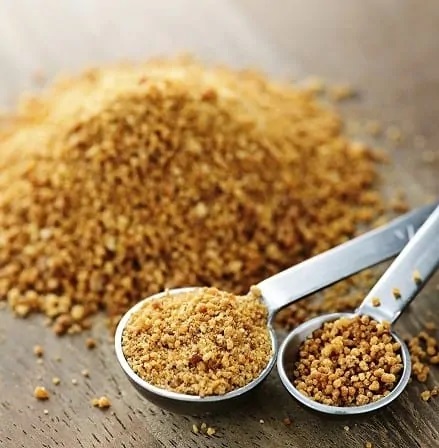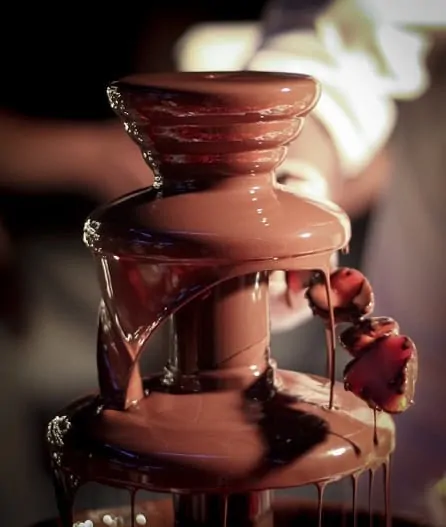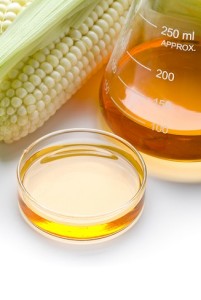 Yesterday, we discussed how sugar cane went from an obscure grassy reed growing in India, to the glittering jewel in the colonial crown of the Caribbean.
Yesterday, we discussed how sugar cane went from an obscure grassy reed growing in India, to the glittering jewel in the colonial crown of the Caribbean.
We discussed the initial surge in sugar consumption starting 1650, and how it was only the reserve of aristocrats for many centuries beforehand.
We stopped at the Brussels convention in 1903, when sugar trading developed nations vowed to end trade tariffs, cut prices, and make sweet sugar more easily available to the average man and woman. And succeed they did.
Let’s resume this epic tale:
World War 1
Before World War 1, worldwide sugar production had climbed steadily upwards, rising 60% from 1902/3 to 1913/14.
In 1909-13, Cuba produced 25% of global sugar exports while the Dutch East Indies made up 17%. However, it was now Europe who exported 35%, alongside 43% of global sugar production. 99.8% was beet sugar and a handful was cane sugar grown in Spain.
So when Europe spiralled into war, the resulting chaos caused the first downward slope in the sugar graph for decades.
78% of France’s, 65% of Germany’s and 95% Russia’s sugar beet factories were “no longer operational”, to put it mildly. Global sugar consumption was 21 million on the eve of battle in 1913/14, but fell to 18 million by 1919/20.
England suffered particularly badly. It was the only net importer of sugar in Europe, with no decent beet factories. With its neighbours reduced to rubble, expensive cane sugar from Cuba was the only option. Incredibly, the British free-for-all of jams, marmalade and confectionery actually slowed down a bit.
That said, production in non-European countries was still rising, like in Cuba, with an 82% rise over the war. The total world sugar output in 1919/20 was only 17,867,000 tons below the pre-war average.
In the US, the war was just a blip: sugar consumption fell by 337,000 tons to 3,801,000 tons, from 1917 to 1918. The only real dark days were 1918, just before the war ended, where weekly sugar consumption fell to 0.93 lb from 1.49 lb in 1914.
The US introduced sugar rationing in January 1918, the first food, with butcher’s meat coming second. The government resorted to issuing pamphlets like “sweet without sugar“, a recipe guide. It screamed “The new sugar crops are short. 50,000,000 pounds of sugar have been lost through submarine sinkings“, and contained recipes like apple brown betty and chocolate filling sweetened only with dark corn syrup. However, the rationing was very poorly enforced, technologically primitive as they were.
Plus, when the US entered the war, they quickly created a 5 man “International Sugar Committee” in September 1917, stuffed with two Americans, two allied members, and one esteemed sugar industry expert.
The goal: to distribute sugar between the allies as effectively and economically as possible. All purchases from Cuba, Puerto Rico and the Dominican Republic were made through the Council. The system worked well, keeping our sugar addiction afloat.
Even the greatest war the world had ever known couldn’t stop the rise of sugar.
The Depression era
 The armistice on November 11th 1918 brought a brief dose of chaos. The US and France tried to remove wartime sugar controls, only to hastily reintroduce them when the price spiralled out of control.
The armistice on November 11th 1918 brought a brief dose of chaos. The US and France tried to remove wartime sugar controls, only to hastily reintroduce them when the price spiralled out of control.
There was an extremely sharp spike in 1920, but it was actually a spell of severe weather in Cuba, which slashed their exports by 13%. Then it got worse: giant sugar companies held back their supplies to wait for even higher prices!
The price of sugar peaked at $23.57 on May 19th 1920. However, a flood of Javanese sugar slashed it to $4.90 by May 1921 compared to $7.30 in May 1919.
Consequently, the post war sugar slump ended as soon as it began. Prices were rock bottom for the average American until the early 1930s, except for brief spikes in 1923 and 1924 due to poor harvests in Louisiana.
One reason was the massively expanded sugar cane capacity during the war. Cuba had so many mills and refineries that the white stuff became an unprofitable avalanche. Businesses were forced into emergency loans, causing unemployment among Cubans everywhere. Using fresh 1920s technology, farmers made their mills more efficient, hoping to widen their profit margins, but most took the opportunity to lower prices again. It became the “Cuban Sugar Depression”, but the bottom-barrel prices did help apple pie-loving Americans.
Meanwhile, the European beet sugar industry climbed back to pre war levels by 1927. The sweet ball of sugar was rolling again in England and France.
In the mid 1920s, Dutch farmers finally created a new, rapidly growing agricultural strain. For millennia, the sugarcane plant wasn’t even believed to produce a seed. It was actually minuscule, so tiny that no cross-breeding had been attempted. It gave the Dutch colony of Java a huge cost advantage for several years, but eventually pushed costs down for everyone.
So how did the Great depression impact sugar consumption? It depressed it – but only by 17% between 1929 and 1932. In 1930, Cuban sugar was taxed at 2 cents per dollar by the Smoot-Hawley Tariff. Cuban exports plummeted by 2 million tons from 1929 to 1930, but thanks to a gentlemen’s agreement between Cuba and the US during the 1930 Chadbourne Negotiations in New York, prices stabilised again. The International Sugar Agreement of May 1931 was equally helpful, covering 50% of the world’s sugar exports. Countries like Hungary, Cuba, Java, Germany, Peru and Yugoslavia were given quotas for exports, which kept prices healthy.
Sugar never suffered much from the Great Depression. After it all blew over, the world had vast sugar surpluses for most of the 1930s.
If the greatest economic crisis in US history could not halt the sugar express, then what could?
World War 2
Everyone knew that war was coming by Spring 1939, although some held out desperate hope. The faint rumble of tanks could be heard in the distance, but this time, England remembered the sugar shortages of 1917 and accumulated huge stockpiles. Likewise, US stocks stood at an all time record of 1,592,000 tons on September 1st 1939.
Overall US sugar consumption was 6,860,000 tons in 1939 and 7,029,000 in 1940. It rose to 8,055,000 in 1941, but after entering the war on December 14th 1941, sugar consumption plummeted to 4,459,000 for 1942. Why? Because after Pearl Harbour was attacked, the government instantly executed Order M-55, freezing all sugar stocks to cut off hoarding and panic buying.
Before the war, the average American enjoyed 1 pound of sugar per week, but in April 1942, the ration was officially slammed down at 0.5 pounds.
It was a blanket order: 50% of 1941 sugar usage, with important industries allowed 70%. To prepare, all sugar sales were halted on April 27, only restarting on May 4th. People spent a full week twitching in anticipation of their next sugar fix. Even kids were given ration books, to prevent parents from nobly sacrificing their own rations for them.
The Japanese seized the Philippines in 1942, and with it the island’s prized sugar fields. The US was forced to rely on Hawaii, Central and South America, but submarines were prowling the ocean like sharks, and their cargo ships were repurposed as naval fighters. Supposedly, Americans ate just 6 tablespoons of sugar during the war versus 22 during the days of peace.
Plus, there was one undeniably compelling reason: soldiers were allowed two times more sugar than civilians back home, to get them properly hyperactive on the front line.
By 1943, though, the German U-boat menace was retreating, and American dockworks became more efficient. Caribbean sugar flooded back in, and US consumption rose to 6,332,000 tons again in 1943. Housewives became experts at respinning old staples like honey and maple syrup.
However, US sugar production decreased by 43% in 1943, failing to recover fully until 1947. The problem? Firstly, sugar beets required diligent hand labour in the 1940s, but those guys were off fighting the war. Secondly, sugar beet land was easily convertible to farms for important war crops. Somehow, American sugar cane production increased during World War 2, in the old Louisiana fields. 444,000 tons were farmed in 1942, 6.7 percent above 1941.
Hawaii was the hardest hit. Under constant threat of Japanese aerial assault, every last piece of sugar machinery was repurposed for war. Hawaiian production for 1942-47 was 12% below 1941, but they did have mangoes to keep them company.
It was ultimately similar to World War 1. After two surprisingly sugary years, the ration was dropped to an addiction-triggering 0.393 pounds per week in February 1st 1945 and again to 0.285 pounds on May 1st. US sugar reserves were only 1 million tons in the first six months of 1945 versus 2.5 million in 1940.
1946 was a particularly tough year, as the US exported mountains of sugar to aid the war-torn people of Europe. Total US sugar consumption fell from 6,138,000 in 1945 to 5,660,000 in 1946.
But did World War 2 have a lasting impact? No – sugar dealers were up and running again in no time. All sugar rationing was over by August 30th 1947, and by June 12th for the average consumer.
Global sugar consumption was back to prewar levels by 1948, and so were the prices.
High fructose corn syrup is born
 Consumption stayed steady for decades then. There were trade deals and international agreements aplenty, but nothing was more significant than the rise of a particularly acne-causing form: high fructose corn syrup.
Consumption stayed steady for decades then. There were trade deals and international agreements aplenty, but nothing was more significant than the rise of a particularly acne-causing form: high fructose corn syrup.
It was invented by Richard O. Marshall and Earl P. Kooi in 1957, but didn’t become viable until the late 1960s, when the first commercial batch was shipped. A tiny rise began in 1971, intensifying from 1974. Then in 1978, HFCS shot for the stars like a rocket, exploding in popularity, with sucrose falling by similar proportions. The exponential growth ended in 1985, but HFCS continued to increase at slower rates.
But why? Firstly, sucrose had serious problems. Its grainy nature required it to be dissolved before being added to processed food. It spoils easily in acid, and it grows in equatorial countries. Governments were sick of perfecting their sugary supply chain only for a hurricane or a military coup disturb it.
Louisiana alone couldn’t satisfy the sweet appetite of the US. HFCS seemed like a gift, with the plentiful cornfields of the Midwest stretching as far as the eye could see. High fructose corn syrup was ideal for acidic beverages, and its liquid nature allowed it to be pumped from delivery trucks right into the storage tankers of food companies. Corn was also subsidised directly by the US government.
Oh, and there’s one other factor – HFCS tasted sweeter! That’s because it’s 60% fructose vs 40% glucose, versus 50:50 in table sugar.
Consequently, the HFCS express was all too inviting in the 1970s. Also, in the secretive lands of the Soviet Union, the corn harvest had clearly failed, as in 1971, the Russians imported a colossal shipment of American grain. The price of corn skyrocketed, encouraging US farmers to plant field after field. When the price normalised, they were left with mountains of unused corn, but whereas decades ago, this would have crippled their business, in 1972, this was the perfect raw material for sweetness.
HFCS ultimately replaced sugar in bread, fruit yogurt, candy and energy drinks. Coca cola was a classic example. Terrified of Pepsi’s rising marketing share, they hatched a notorious plan in 1985 which soon became a byword for “if it aint broke, don’t fix it”. It was new Coke, and it contained high fructose corn syrup instead of normal sugar.
According to questionnaires, most people liked the new flavour initially. Instead, they were heartbroken at the death of the classic one, an old American tradition. Pepsi took out full page newspaper ads mocking Coke, saying they’d finally won the war. People wrote letters to coke executives saying they’d lost a lifetime customer. Peer pressure became a factor, as new coke quickly became a fantastic joke.
Finally, Coca Cola reintroduced the original recipe as “Coca cola classic”. But here’s the point: it wasn’t the same recipe at all!
The sucrose was replaced with the cheaper high fructose corn syrup. Consumers with sharp taste buds could tell the difference instantly, creating the conspiracy that the entire New Coke stunt was a ploy to cut costs.
Similar stories were repeated everywhere – companies subtly switching to HFCS under a smokescreen of “new and improved recipe”.
The 1970s sugar conspiracy
The first alarm bells over sugar’s unstoppable rise were sounded in 1942.
The American Medical Association said that steps should “be taken to limit consumption of sugar in any form in which it fails to be combined with… other foods of high nutritive quality”
However, the avalanche started when Dr John Yudkin published Pure, White and Deadly back in 1971. He was one of the earliest, and bravest, scientists to sound the alarm against this innocuous white menace. He stated that “if only a small fraction of what we know about the effects of sugar were to be revealed in relation to any other… food additive, that material would promptly be banned“.
But the processed food establishment quickly converged like a thunderstorm, leaving his reputation in tatters.
Yudkin became a figure of fun, a crazy eccentric who esteemed scientists would make fun of. He was no longer invited to international scientific conferences, and journals refused his research papers.
When he retired from Queen Elizabeth Collage in 1971, the college reneged on its promise to keep his research room available to him. Even Pure, White and Deadly‘s final chapter detailed several schemes to suppress his research.
All this just for speaking the truth, or even if it wasn’t ultimately true (which it was, of course), all this just for conducting honest research.
One player in this game was Dr Ancel Keys, a charismatic scientist with board roles in the American Heart Association and the National Institutes of Health. In 1961, he published the infamous seven countries study, strongly linking fat consumption and cardiovascular disease.
The problem was, he originally tested 17 countries, and when you included places like France (cheese loving yet healthy hearted), the association vanished. More fascinatingly, the study’s lead researcher Alessandro Menotti reanalysed the data years later and found that sugar correlated most closely with clogged arteries.
Regardless, Keys’ work led directly to official government guidelines against dietary fat. Even President Eisenhower publicly vowed to quit butter. The beneficiary was the margarine collective…
…and another shadowy figure was the Sugar Research Foundation. Documents from 1967 show that SRF paid 3 Harvard scientists $50,000 in today’s money to publish a review of the diet/heart disease link. The SRF cherrypicked the studies included, and the verdict shifted all blame to saturated fat while gently reassuring readers about sugar. The SRF even phoned up the scientists for progress reports mid analysis.
The SRF has since mutated into the Sugar Association, and when these documents were unearthed by JAMA in 2015, the Sugar Association criticised the “baiting headlines” which overshadow “quality scientific research”. But the funding schemes continue. Coca Cola was caught red handed funding “Global Energy Balance Network” in 2015, which masqueraded as an independent research body, but was actually a front for Coca Cola to claim that getting no exercise caused obesity and not sugar consumption.
No industry has closed ranks like the sugar behemoth, with the possible exception of margarine.
Sugar today – facts and figures
 Where do we stand nowadays then? In 1840, average US added sugar consumption stood at roughly 10 pounds per person, yearly.
Where do we stand nowadays then? In 1840, average US added sugar consumption stood at roughly 10 pounds per person, yearly.
By 1920, this had rocketed to 80 pounds. There were brief, but sharp dips around World War 2 – like stalactites hanging from a cave roof – but sugar mania stayed fairly steady until around 1980.
At this point, sugar steadily ascended to another level, peaking at 110 pounds annually in 2000.
As of 2010, sugar had fallen back slightly to 105 pounds, led by the outcry over its health poisoning powers. But nothing fundamental has changed. Yes, companies will proclaim that they’re reducing added sugar in their energy drinks, but at best, this is tinkering around the edges. The processed food economy lives on.
It wasn’t until 1990 that Congress passed the Nutrition Labelling and Education Act, which allowed the FDA to make nutritional labelling compulsory. Yet somehow, listing sugar was deemed to be unnecessary. Fortunately, a bunch of alarmed inquiries changed their mind, but they only mandated total sugar, and not added sugar.
In 1983, the FDA finally launched the Sugar Task Force to investigate sucrose and HFCS. In 1988, sugar was granted Generally Recognised As Safe (GRAS) status. That sounds fine – sugar is perfectly safe in fruits, and a sprinkling in coffee or dark chocolate. Sadly though, it was based on “the assumption that the consumption and availability of total sugars will remain at current levels“. That level was 80 grams of added sugar daily.
After many more reviews, and scientists afraid to speak up or be “Yudkinified”, the WHO finally caved.
By 1990, they recommended just 10 percent of total calories from “free” sugars daily, or approximately 50 grams. In 2003, they repeated themselves exactly, but to much more publicity. In response, the sugar industry threatened to wipe the WHO off the face of the Earth and called on the US Congress to abolish its funding. They argued that 25% of calories from added sugars was fine and dandy. In 2015, the WHO went further, keeping the 10% calories threshold, but declaring that pushing to 5% was even better.
Today, almost everybody knows that sugar wreaks your body, mind and possibly soul in high amounts. A 2009 Youtube video called “Sugar: the Bitter Truth” brought the tale of Yudkin back into the limelight, and his reputation is now restored. But this innocent-looking, tiny white crystal (there’s more than one of those) is here to stay.
Always remember that trans-fats were granted GRAS status back in 1958. But now, these frankenfats are a byword for cardiovascular failure, and the WHO wants them phased out of not just processed food, but existence by 2023.
Conclusion
This is how an acne causing villain can take hold of society. Trans-fats had a similar tale of industry collusion and economic necessity. For trans-fats, it was the vast piles of cottonseeds left over.
They were initially great for fuelling lamps, but in the early 1900s, scientists pioneered the hydrogenation process to make liquid fats solid. Crisco was born, and this trans-fat originator was vastly cheaper than butter, derived from cottonseeds rather than cows.
The difference is that trans-fats are almost defeated in Western countries, although a bustling Indian marketplace with traders yelling at you to buy Vanaspati is another story. Sugar still survives.
Addiction is another factor. Trans-fats can be easily replaced, but sugar? Its dopamine spiking, opioid generating sweetness is hard to replicate. Stevia is popular among paleo dieters, but I doubt that it will ever reach the mainstream.
The only thing to do is gain this knowledge and start down your own acne-clearing, sugar-reducing path.
Soon, we will travel back in time to the days of yore, and discuss sugar’s history in the age where there was no history.
Thanks for reading!